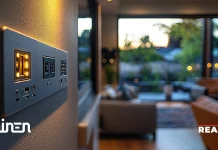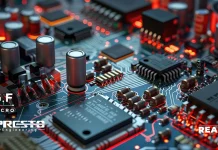Panasonic Automotive Systems Co., Ltd. (PAS) and Arm announced a strategic partnership to standardize vehicle architecture for software-defined vehicles (SDVs). The two companies share a vision to develop a flexible software stack that meets the current and future needs of the automotive industry. PAS and Arm were brought together through their active participation in SOAFEE , an industry-wide initiative that drives closer collaboration on standardized software development across the automotive sector. Through this new partnership, the companies will adopt and extend the VirtIO device virtualization framework to decouple automotive software development from hardware and accelerate automotive development cycles.
The automotive industry is consolidating more and more electronic control units (ECUs) into a single powerful control unit such as the Cockpit Domain Controller (CDC) or the High-Performance Computer (HPC). This makes hypervisors and advanced chipsets more important than ever. However, many automakers and Tier 1 suppliers are faced with manufacturer-specific, proprietary interfaces that lead to higher costs and longer delivery times when switching from one vendor solution to another.
With this in mind, PAS and Arm have recognized the need to move from a hardware-centric to a software-centric development model. Standardizing the interfaces between automakers’ and Tier 1 suppliers’ software stacks and the underlying hypervisors and chipsets they run on will simplify the adoption of next-generation technologies optimized for automotive partners’ needs and use cases.
Also Read: Adient Partners with Paslin for Joint Development
This new partnership will launch several important initiatives:
1. Using VirtIO-based Unified HMI to standardize zonal architecture
PAS and Arm use VirtIO not only to virtualize devices connected to a central ECU such as CDC/HPC, but also remote devices connected to zonal ECUs. The two companies have demonstrated a groundbreaking proof of concept that used PAS’s open source Unified HMI remote GPU technology to implement a display zonal architecture built on Arm. This architecture distributes GPU loads from the central ECU to multiple zonal ECUs, reducing heat and harness weight without impacting applications running on the central ECU. Flexible partitioning of the Mali™-G78AE GPU in Zonal ECUs allocates dedicated hardware resources to different workloads, supporting deterministic graphics performance in a display zonal architecture. PAS and Arm are working together on a SOAFEE blueprint and reference implementation to standardize emerging zone architectures in the automotive sector.
2. Environmental parity from cloud to car
PAS’ vSkipGen™ runs on Arm ® Neoverse™-based cloud servers. By adopting the Arm CPU architecture and VirtIO device virtualization framework, this initiative will ensure comprehensive environmental parity between virtual cloud hardware and automotive hardware. PAS and Arm will jointly implement VirtIO in virtual hardware, bridging the gap between virtual and physical automotive systems.
3. Expanding VirtIO standardization
While the current focus is on cockpit use cases such as Android Automotive™ and Automotive Grade Linux™, PAS and Arm are seeking to expand VirtIO standards to cover a wider range of automotive applications. This includes standardizing real-time operating system (RTOS) interfaces to free advanced driver assistance system (ADAS) software from hardware dependencies.
Masashige Mizuyama, Executive Vice President and Chief Technology Officer at PAS, explains: “Our partnership with Arm aims to promote the standardization of VirtIO and take this industry standard to the next level. By combining the expertise and leadership of our companies, this collaboration will unlock the full potential of the software and serve as a foundation for developing the future of automotive technology towards SDV.”
Dipti Vachani, Senior Vice President and General Manager, Automotive Line of Business at Arm, commented: “SDVs remain one of the most promising opportunities for automakers, but realizing this vision requires innovative approaches to enable software developers to get to work before physical silicon is available. Our partnership with PAS is a result of both companies’ active participation in SOAFEE and builds on the shared goal of overcoming industry fragmentation through standardization, ultimately accelerating development cycles for our partners.”
SOURCE: Businesswire




